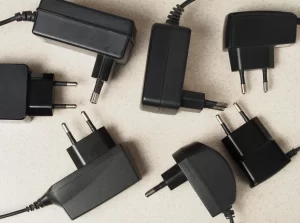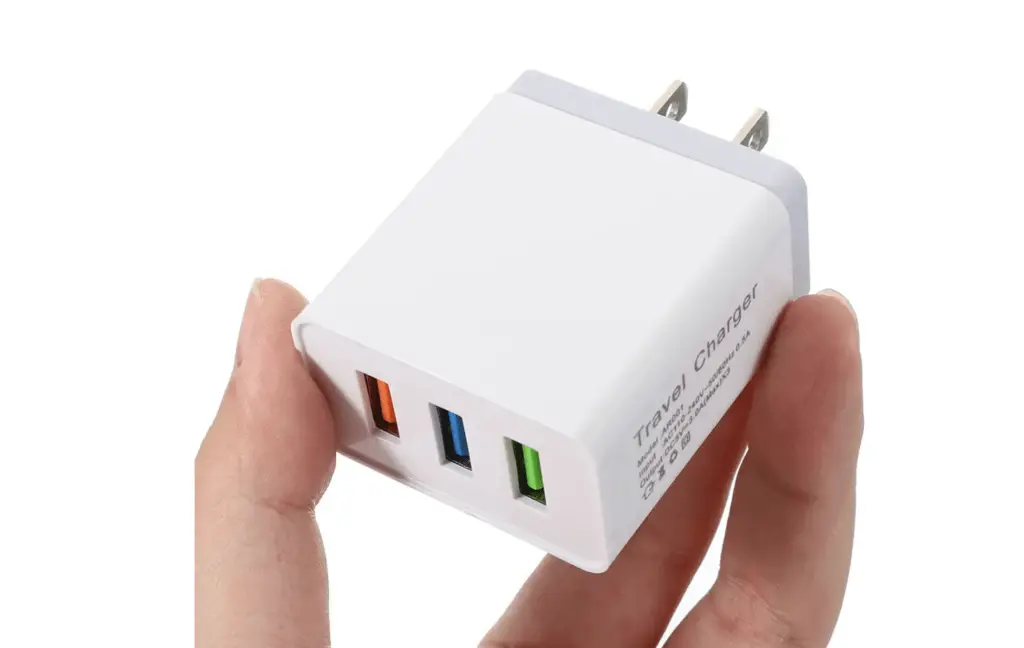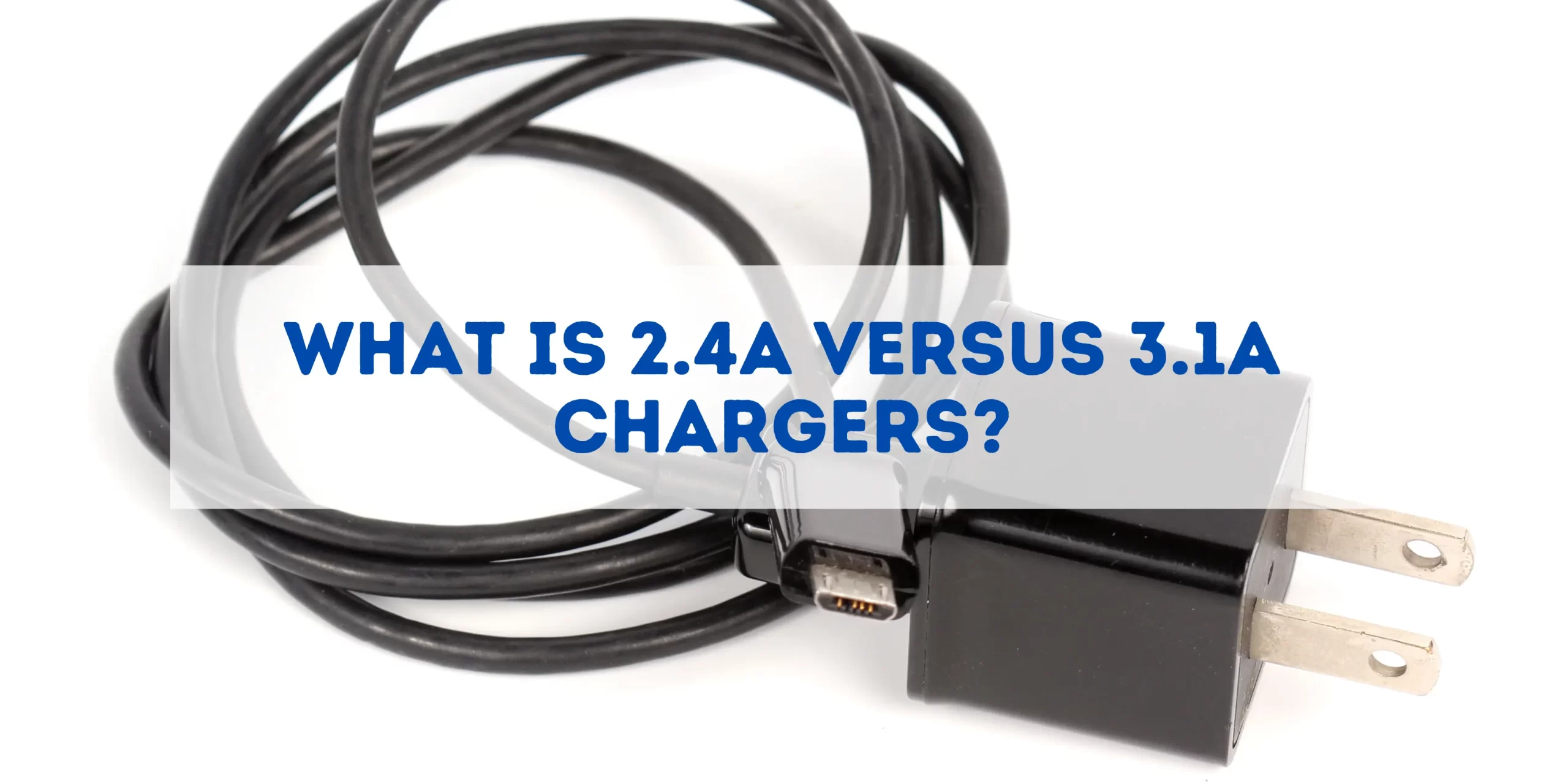Our phones have become more pervasive parts of our lives, and their battery capacities have increased. Demand and development of faster charging methods and standards naturally followed. Crucial to this is the different charger ratings, but what do they mean?
If you’re wondering about the difference between a 2.4A and a 3.1A charger, the answer lies in the amount of current each charger can deliver.
However, this information on its own may not be helpful in determining which charger is best for your needs. To select the right charger, you need to consider other factors, including compatibility with your device and fast-charging standards.
What does 2.4 A charger mean?
A 2.4A charger refers to a charging device that provides an output of 2.4 amperes (A). The “A” in “2.4A” stands for Ampere, which is the unit of electric current in the International System of Units (SI). The figure ‘2.4’ represents the amount of electrical current, in amperes, that the charger can deliver to the device it’s charging.
What does 3.1 A charger mean?
A 3.1A charger refers to a device capable of delivering an output current of 3.1 Amperes (A). In “3.1A”, “A” stands for Ampere, which is the standard unit for electrical current as per the International System of Units (SI). The number ‘3.1’ denotes the quantity of electric current, in amperes, that the charger is designed to provide to the device it is charging.
The rate at which a charger can deliver current greatly influences how fast your device charges. Generally, a higher ampere rating, such as 3.1A, signifies that your device can be charged faster, provided your device can accept that level of input current.
What Is The Difference Between 2.4A And 3.1A Charging?

The main difference between a 2.4A and a 3.1A charger is the amount of current each can deliver. Amperes (unit symbol A) is the international standard unit for current. The more current a charger can deliver, the faster the electrons can flow through a circuit.
It’s worth noting that electronic devices are rated for different amounts of current, and too much current can damage your device. However, phones’ charging circuits almost universally limit the amount of current automatically to avoid accidentally frying your phone. For fast charging, different phones and chargers expect different levels of amps and power, though.
Is 2.4A a Fast Charger?
A charger rated at 2.4A is considered “fast” relative to the basic or older USB chargers, but it might not be considered “fast” when compared to more recent rapid charging standards.
Here’s a breakdown:
- Basic USB chargers: These typically offer about 0.5A of current.
- Wall chargers for smartphones (a few years ago): They often provided 1A of current.
- 2.4A Chargers: They are faster than the aforementioned ones and are suitable for both smartphones and tablets, which often have larger batteries and can accept higher charging currents.
- Quick Charge and other rapid charging technologies: Introduced by companies like Qualcomm, these chargers can offer higher amperage (beyond 2.4A) and even increase the voltage to speed up charging. For instance, Quick Charge 3.0 can boost the voltage up to 20V. Similarly, USB Power Delivery (USB-PD) offers fast charging capabilities, especially for devices like newer iPhones or Google Pixel phones.
You may also like: Can You Safely Charge AirPods with a 20W iPhone Fast Charger? - Other proprietary fast charging systems: Different brands have their own proprietary fast charging standards, such as OnePlus’ Dash/Warp Charge, Oppo’s VOOC, and more. They often operate at higher voltages and/or currents to rapidly charge devices.
In summary, while a 2.4A charger is faster than many standard chargers, it may not be as fast as the latest rapid charging standards available in the market. The effectiveness of a charger also depends on the device it’s charging; some devices might not be able to take advantage of currents as high as 2.4A, while others might be capable of handling even more.
Is 3.1A a Fast Charger?
3.1A Chargers: These are a step up and can deliver more current, leading to potentially faster charging times. They are especially useful for devices like tablets, which can accommodate higher charging currents.
Quick Charge and other rapid charging technologies: Qualcomm’s Quick Charge and other similar technologies can deliver even faster charging speeds by using higher amperages and, more importantly, varying the voltage. For instance, Quick Charge 3.0 can dynamically adjust the voltage between 3.2V to 20V.
Other proprietary fast charging systems: Brands like OnePlus, Oppo, and others have their own fast charging standards that might operate at higher currents or use different voltages to achieve rapid charging.
In summary, a 3.1A charger is faster than many older or basic chargers and can be considered fast. However, it might not be as speedy as some of the latest proprietary or advanced fast charging technologies. The actual charging speed also depends on the device being charged: its battery size, its charging circuitry, and whether it’s designed to take advantage of higher current inputs.
Top 3.1A Chargers for iPhone: A Quick Comparison
When it comes to fast charging your iPhone, picking the right charger can make a significant difference. Here’s a quick comparison of three top 3.1A USB chargers: AILKIN’s Wall Charger, Boxeroo’s USB-C Wall Charger, and Baseus’ 140W Wall Charger PD 3.1.
AILKIN’s Wall Charger
- Brand: AILKIN
- Special Features: Fast charging, over-current protection, lightweight
- Compatibility: Extensive range including iPhones, Samsung, and Kindle
- Notable: This charger allows for simultaneous charging of up to three devices with its 3-USB plug output, boasting a total current of 5V/3.1A.
Boxeroo USB-C Wall Charger
- Brand: Boxeroo
- Special Features: Fast Charge 3.0, multi-device charging
- Compatibility: HTC 10, iPhones, Galaxy S series
- Notable: With 4 USB ports including a Fast Charge 3.0 port, this charger can cater to all your charging needs. It even comes in a 2-pack for extra convenience.
Baseus 140W Wall Charger PD 3.1
- Brand: Baseus
- Special Features: PD 3.1 super-fast charging, GaN 5 technology
- Compatibility: Broad range from iPhones to laptops and smartwatches
- Notable: This charger takes the cake for sheer power, offering an ultra-high-speed 140W PD USB-C port. It’s equipped with advanced GaN 5 technology for efficient and safe charging.
Which Charger Should I Use?

The ideal choice of charger depends entirely on the device you’re trying to charge. A charger that is too powerful (within reason) won’t damage your device. Fast charging support is split by protocol, so one fast charger might not quickly charge an incompatible device. Devices limit how much power they receive.
Some of the big-name fast-charging protocols include:
- USB Power Delivery (which is higher than the nominal USB power output)
- Qualcomm Quick Charge
- Samsung Adaptive Fast Charging
- OnePlus Dash And Warp Charging
- Motorola Rapid Charging and TurboPower
- MediaTek Pump Express
- Oppo Super VOOC Charging
Different standards have different versions, so consult the manufacturer’s websites for compatibility. Once you know what variety of fast charging you need, find a charger that supports it.
To find out the wattage your phone will support:
- Go to GSMArena
- Search for your phone’s model
- Find the “Battery” then “Charging” entry in the data table
- The maximum wattage will be shown, e.g., 10W
How Fast Will A Charger Charge?
The charging speed depends on power delivery and battery capacity. First, we’ll need a little more physics to understand the principle.
Voltage (with the unit Volt, symbol V) is the amount of “work” the charge in the circuit can do. If you keep expending energy, you can either:
- Push an electron swiftly (high current), but it can be slowed down easily (low voltage)
- Push an electron forcefully (high voltage), but you can’t push it quickly (low current)
In summary, power equals voltage times current. You need to know both voltage and current to work out the power. More power means energy transfers faster if your phone doesn’t throttle it.
Conclusion
We might expect the 3.1A charger to be faster if we know the voltage is the same. However, it is far more critical to ensure that your charger and phone support compatible fast charging standards to minimize the time your phone needs to be plugged in.
References:
- “About Power (physics) Explanation” From Wikipedia
- “About Electric current Explanation” From Wikipedia
Frequently Asked Questions
What is the difference between a 2.1A and 2.4A charger?
The difference between a 2.1A and 2.4A charger lies in the amount of current they can deliver. A 2.4A charger can deliver more current than a 2.1A charger, which means it can generally charge your device faster. However, your device also needs to be able to support this higher current for the faster charging time to apply.
How does a 2.4A charger compare to a 3A charger?
Similarly, a 3A charger can deliver more current than a 2.4A charger, resulting in potentially faster charging times. However, the charging speed will also depend on whether your device can support 3A charging. Not all devices can, so it’s always best to check your device’s charging specifications before using a charger with a higher output.
What’s the difference between a 1A and a 2.4A charger?
The primary difference between a 1A and a 2.4A charger is the amount of current they deliver. A 1A charger provides 1 Ampere of current, while a 2.4A charger provides 2.4 Amperes. This means the 2.4A charger can potentially charge devices faster than a 1A charger, assuming the device can handle the higher input. However, the actual charging speed can also depend on other factors such as the device’s acceptance of current, the charger’s efficiency, and the quality of the charging cable.
You may also like: Can Samsung Phones’ PowerShare Charge Other Phone Brands?

